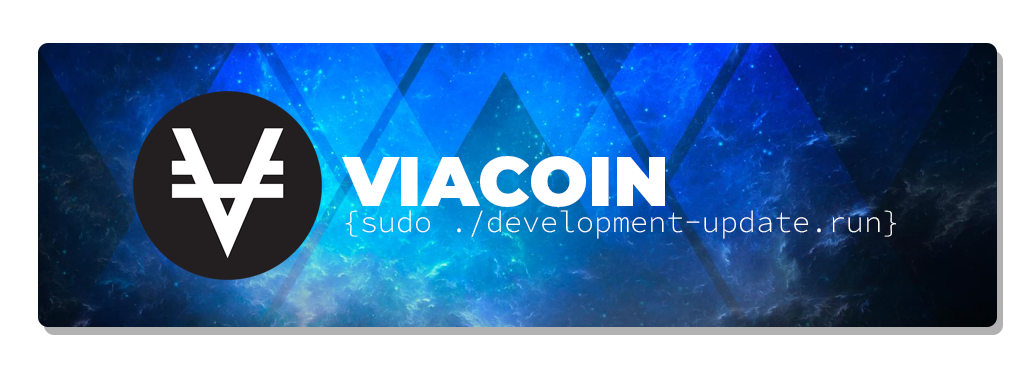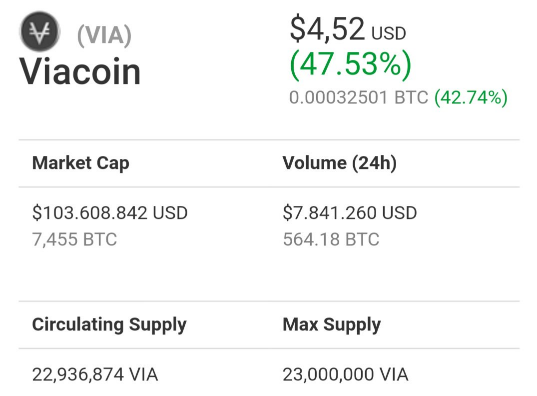From Viacoin to Via L2: Scaling Bitcoin

The original Viacoin was a cryptocurrency that supported embedded consensus with an extended OP_RETURN of 120 bytes. Embedded consensus is a design method for building layer-2 logic on top of Bitcoin without changing Bitcoin itself.
History
In 2014, Viacoin was launched with support for embedded consensus, creating a system similar to those of Mastercoin and Counterparty. Counterparty came out, and we thought that idea definitely had legs, but we believed it should be built on an altcoin.
There are many ways to embed data within the blockchain. Several methods, such as multisig encoding and OP_RETURN, embed data within the blockchain. While different ways are possible, the ability to censor embedded content within the Bitcoin blockchain raises questions and is open to discussion.
So you may wonder what OP_RETURN is and why it is important for embedding data. A bitcoin transaction is basically a script. So if I have some coins and want to transfer value to you, I write a transaction script where I sign over my coins or unspent outputs to you, which are encumbered to your address.
Normally, the script states that only the person who can now unlock it is the person who owns the private key for this Bitcoin address. That’s the most common Bitcoin transaction. So, for you to spend that, you have to supply your private key and then create a transaction message that unlocks it and sends it to someone else. So, within the Bitcoin scripting language, there are many different ‘commands’ within the scripting language, and OP_RETURN says the following is a bit of metadata.
When Mastercoin was introduced, there was a strong reaction from Bitcoin developers, who viewed it as spam on the blockchain. Their idea of a blockchain is limited to transactions, sending value from Alice to Bob, rather than sending a “fake” transaction with the only goal of embedding metadata, and the same applies to Counterparty. Even in 2025, we still see the arguing and pushback, as Bitcoin Core developers and part of its community view this as "bloating" the blockchain.
Counterparty released its whitepaper and discovered a new method for encoding metadata using OP_RETURN, which allows for 80 bytes of data. Within about a month of the paper's release, Bitcoin Core released a new version that reduced OP_RETURN from 80 bytes to 40. It was and still is unfortunate that many Bitcoin Developers believe sending metadata isn’t a valid use.
Lots of people have a different view on what is a valid use of the (Bitcoin) blockchain. We don’t want to unfairly judge Bitcoin Developers for the views they held or still hold, because, in some sense, they are valid and, in some ways, also understandable.
In 2014, if you wanted to build an embedded consensus system, then Bitcoin was not the best due to the ongoing censorship at the time, which is why Viacoin was created. Viacoin accepted embedded consensus systems, such as Counterparty.
https://cointelegraph.com/news/viacoin

Viacoin as Bitcoin’s Testbed”
While the Counterparty developers were pushing hard to raise the limit due to issues with speed and transaction costs, Bitcoin Core refused to do so. This led to frustration among the XCP team and highlighted the team's significant dependence on Bitcoin. Being a second-layer token creation platform also meant being at the mercy of the Bitcoin Core Developers.
Out of this frustration, a reaction was made
"Okay, so what if we launch our own Blockchain since the Bitcoin Core developers don’t want bloat?"
Viacoin was launched to leave those underlying problems behind.
If you’re going to create something like Counterparty or Mastercoin, you’re relying on an upstream project. If that upstream project is changing the rules underneath your feet, that’s a problem, especially when it comes to designing a system that could be used in finance and potentially scaled up.
Core developer Peter Todd was brought in as Chief Scientist for Viacoin. During that time, Peter Todd helped implement BIP65 CLTV (CheckLockTimeVerify) on the Viacoin blockchain before any other altcoin or Bitcoin.
CheckLockTimeVerify was an innovation that would later become an essential feature in Bitcoin itself. The lightning network is possible due to CheckLockTimeVerify.

Due to this experimental and forward-thinking approach, Viacoin has earned a reputation as a "testbed" blockchain. A place to try out potential improvements to Bitcoin without needing consensus from Bitcoin Core. We also implemented SegWit before Bitcoin did.

Viacoin also launched ClearingHouse in 2014, which was similar to Counterparty, allowing various smart contracts and actions to be created and deployed. It was a more integrated, stripped-down version of the Ethereum Virtual Machine designed to support basic smart contracts.

While Counterparty used Bitcoin as its settlement layer, Clearinghouse used Viacoin. Bitcoin Core had limited the OP_RETURN field to 40 bytes to censor the Counterparty. For Viacoin, we extended the OP_RETURN limit to 120 bytes for the ClearingHouse project.
It's worth noting that Bitcoin Core developers shot themselves in the foot by reducing opreturn to 40 bytes, as they were later forced to raise the limit back to 80 bytes. For example, with the proposal of stealth addresses back then, there may be a need to communicate some data to the recipient so that the data is then stored in the op-return. Cutting down from 80 bytes to 40 bytes also impaired the stealth address proposal, so it wasn’t just Counterparty that got into trouble.
Censoring transactions is difficult on the Bitcoin blockchain. People will continually find ways to incorporate metadata into the Bitcoin blockchain. It's like trying to cut the head off a hydra. Whilst one could reduce OP_RETURN 80 and cut that head off, then another bare multisig encoding raises its head, and if you cut that head off, then there’s undoubtedly another way to encode metadata.
After that, Viacoin hired Peter Todd as Chief Scientist to research Treechains. One of the hurdles with blockchain is scalability. As more people use it, the network can become congested, leading to slower confirmation times, higher fees, and other issues.

Treechains allows for blockchain scalability and side-chain coordination. Furthermore, Treechains would promote a greater degree of mining decentralization.
Imagine a network of interconnected blockchains, like a tree with multiple branches, and each branch can process transactions independently, making the system much more scalable. It’s like taking the pressure off a single highway by creating a highway of interconnected roads. Remember, this was all in 2014.

The Binance listing for Viacoin
Viacoin ranked in the top 100 by market capitalization during parts of 2017 and early 2018, a remarkable feat for a grassroots, Bitcoin-derived project with no ICO, premine, or VC backing.
However, featuring Auxiliary Proof-of-Work (AuxPoW) and early implementations of CheckLockTimeVerify and SegWit made Viacoin stand out, especially since it managed to keep pace with Bitcoin Core's development, unlike most Bitcoin-derived projects.


Binance's listings in early 2018 were highly selective. Listing without substantial VC backing or hype was rare. Competing with coins like Brave's Token and XEM, which had massive hype and funding. Made listing for Viacoin even more unlikely.
Viacoin was a runner-up in the October 2017 "Community coin of the Month" vote against 14 other coins in round 3. Users could cast their vote for 0.1 BNB.
https://www.binance.com/en-KZ/support/announcement/detail/115002493431
Although we did not finish #1 for the Binance Community Coin of the Month, we continued.
Binance listed Viacoin on February 5, 2018, which was an incredible milestone for the community, as Via may have been, against all odds, one of the first non-ICO projects without funding to be listed on Binance at that time. Earning its Binance V-label in December 2018

From Experimental Chain to Bitcoin Layer 2 Sovereign ZK-Rollup
Treechains did not gain traction (It was ambitious, maybe too ambitious), and as better concepts like rollups, state channels, and modular blockchains (Celestia, Optimism, etc.) tackled similar scalability challenges with clearer paths to implementation. Rollups bundle transactions off-chain and settle them on the main blockchain, while modular designs separate data storage from execution.
Rollups bundle transactions off-chain and settle them on the main blockchain, while modular designs separate data storage from execution.
Viacoin had strengths, flexibility, and innovations, but running a separate blockchain came with its own set of challenges. Bitcoin has a massive hash power and global adoption, while it is true that Viacoin relied on auxiliary proof-of-work to thrive for years, while other proof-of-work coins could not. Auxiliary proof-of-work also enabled the Dogecoin chain to remain operational for more than a decade without halting. Viacoin was still based on Bitcoin and relied on large, centralized exchanges to maintain its value, while also incentivizing miners to continue mining.
A lot has changed over the past decade as Bitcoin has opened up potential layer 2 solutions that could extend its capabilities without bloating the chain.
Take Taproot, which became active in 2021. It brought better scripting and multi-signature efficiency, making more complex applications possible. The Lightning Network is made possible by CheckLockTimeVerify, which shows that Layer 2 can facilitate fast and inexpensive transactions.
Even inscriptions, such as Ordinals, proved that you could embed metadata on Bitcoin. Meanwhile, rollups and modular architecture were proving their worth on other chains, offering scalability and functionality while leaning on a secure settlement layer.
Rollups, which process transactions off-chain and settle them on Bitcoin instead of Ethereum, could keep things fast and cheap without sacrificing security or bloating the chain for everyone.
Then we started to wonder. Why keep pushing when we could build on Bitcoin itself? Running an altcoin based on Bitcoin, while Bitcoin’s ecosystem started to expand slowly. Viacoin gave us a head start, allowing us to test ideas like CLTV and ClearingHouse, but Bitcoin’s security, hash power, and user base were unparalleled.
Ultimately, we decided to build Via (2.0) as our own Bitcoin Layer 2 solution.
By using zero-knowledge (ZK) proofs and anchoring state commitments to Bitcoin.
We can process transactions off-chain extremely quickly and at a low cost, settling them on Bitcoin as the final settlement layer, rather than any other chain.
Bitcoin itself, being the most decentralized and superior sound asset backed by proof-of-work, ensures integrity through real-world energy expenditure, making it grounded in physics rather than committee votes.
By anchoring our sovereign rollup's state root into Bitcoin, Via inherits Bitcoin's finality guarantees and Proof-of-Work security, echoing the spirit of AuxPow, without bloating Bitcoin's UTXO set or incurring massive fees every batch.
After all, why would we want to build on the “second best” if we can build on the best? The second-best chain is up for debate, but the best, without a doubt, is Bitcoin.
Want smart contracts? We can have them, echoing the spirit of both Counterparty and ClearingHouse. We'll use Taproot for multi-signatures and inscriptions for metadata.
EVM-Compatible? Sure. Port existing dApps? Yes
It’s not about ditching Viacoin’s legacy, which cannot be explained in text. You just had to be there at the time. However, it’s about adapting and evolving. We’re taking the flexibility and practicality with us. Take Ethereum, for example. A large part of its market cap and TVL is dominated by Ethereum Layer 2, and the upside for Bitcoin L2s is huge.
A Layer 2 for Via would enable us to scale up, as we are not just building a new layer on top of Bitcoin, but also an entire DeFi ecosystem. Bringing EVM smart contracts to Bitcoin.
The holders still owning legacy Viacoins will be rewarded with the airdrop or a swap for the new Via token, which has a vision stronger than before.
Via a Bitcoin L2 Modular Sovereign ZK-rollup
🔗 Github: https://github.com/vianetwork
👥 Discord: https://discord.gg/ReS5cz8M6H
📚 Documentation: https://docs.onvia.org
⚙️ Via Core: https://github.com/vianetwork/via-core
🛠️ Via SDK: https://npmjs.com/package/@vianetwork/via-ethers
🌐 Website: https://buildonvia.org
𝕏 Twitter: https://x.com/buildonvia
🧭 Explorer: https://testnet.blockscout.onvia.org/
Alpha Testnet Bridge: https://testnet.bridge.onvia.org
Network details for metamask:
Network Name: VIA Alpha Testnet
Chain ID: 25223
RPC URL: https://via.testnet.viablockchain.dev
Base Token: BTC
Decimals: 18
Block Explorer: https://testnet.blockscout.onvia.org




